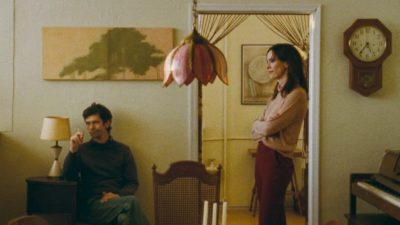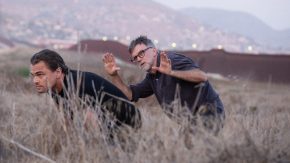Close your eyes and imagine how many colours can come out of a guitar if a very talented musician plays it! Done? All right. How many colours did you see? More than you can count, I guess. Then how about doing the same… with two guitars?
It is a great honour to welcome the Montenegrin Guitar Duo to the Budapest International Guitar Festival, subtitled The Colours of Guitars. The duo, consisting of Goran Krivokapić and Danijel Cerović, will give an unforgettable concert on November 4. Goran will also teach aspiring early career guitarists at his masterclass. I interviewed them about their story, approach to guitar music, and expectations of the upcoming festival.
When and how did your duo form?
Goran Krivokapić: The roots of our formation reach back to the summer of the early 2000s. It might have been 2003 or 2004 when we first played together. We both studied at the Maastricht University in the Netherlands back then.
Danijel Cerović: We had a great professor, Carlo Marchione, for those two years. One of his main goals was to teach his students how to create transcriptions of such classical music that wasn’t originally written for guitar. Creating them became kind of natural for us.
GK: The first piece we did together was one of J. S. Bach’s English Suites, which obviously didn’t exist for guitar before we made our own arrangement. That went pretty spontaneously: Danijel asked what we shall play, and that’s what I suggested. That was the beginning of our joint work. Then we had a bit of a break because Danijel moved back to Montenegro and I moved to Germany, but we picked up the thread in 2008, even though we were in different countries. We have been giving concerts together since 2010. At that point we had finished only two of the suites but eventually, in the coming years, we completed all six and then recorded them in two volumes for Naxos.
DC: We also expanded our repertoire ever since, now we play a lot of different pieces, but we usually still play at least one English Suite at our concerts. At the concert in Budapest you will hear number 6, among other pieces by Manuel de Falla and Astor Piazzolla. We have always mixed old and new music in our concerts, and we really enjoy playing in different styles and genres. Meanwhile, we finished arranging and recording all the English Suites, too – it took us a few years to do but was an exciting process.

Montenegrin Guitar Duo
Do I understand correctly that what initially brought you together was to make more and more classical pieces part of the guitar repertoire?
Both: Exactly.
GK: This is how it started, yes. We had a similar musical taste when we were growing up: we both liked Bach a lot, our favourite recordings were the English Suites. I remember listening to number 2 on vinyl, but also Scarlatti sonatas and similar kinds of music. Also, both of us wished we could play these on the guitar, even though we knew it was impossible. But then we realised: if you take TWO guitars, there are many more possibilities to play these pieces!
Isn’t it hard to position yourself as a classical guitarist? Most people associate guitar with popular music.
DC: Our goal is first and foremost to enjoy the music we make. When done correctly with a decent approach and a lot of creative work, it will attract its audience, whether they have known this genre before or are new to it.
GK: It is true that guitar is mostly regarded as a popular instrument today, but it is also one of the oldest instruments. Certain versions of early guitars have accompanied humanity almost throughout its whole history.
DC: The classical guitar tradition we follow originates from the 19th century Romantic tradition. There were some legendary musicians like Tarréga, then Segovia, then Brim. We follow their patterns, but we also need to find our own pathways when transcribing old music in a decent way. Most of the repertoire that comes from composers for classical guitar is very idiomatic. But if you relate your transcription and performance with some theoretical sources, for instance from the age of Bach, then you really have to invent a different approach.
GK: What I really like about the guitar is that it is a very flexible instrument. It fits well with many different periods, styles and genres, and allows us to have a repertoire that includes folkloric music, jazz, Latin-American music, and anything on the borderlines. Of course, popular music played on the guitar will always be more widely known, but it is already a different world. The invention of the electric guitar was because acoustic guitar is not really an instrument that could play for a very large audience without amplification. For the type of music we play, amplification is not needed and anyway it takes away the authentic sound and many things are lost. The moral of this story is that whereas rock stars can play for huge audiences, our concerts will always remain more intimate.
How do you feel about the upcoming festival?
DC: I am very happy about performing in Budapest. This is a great festival, organised by legendary Hungarian guitarist József Eötvös, to whom we are both very thankful. It will also be a special experience to perform in a beautiful hall in the Franz Liszt Academy of Music. I admire Hungary for all its great musical traditions.
GK: Eötvös is not only a talented performer but also a determined educator. He knows a lot about Bach transcriptions. It is so great to have received this invitation from him to give a concert and teach early career musicians, alongside our colleagues Zoran Dukić (Croatia) and David Russell (England), as part of the three-day festival.

























Comments